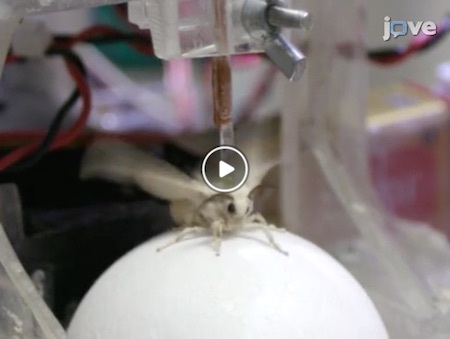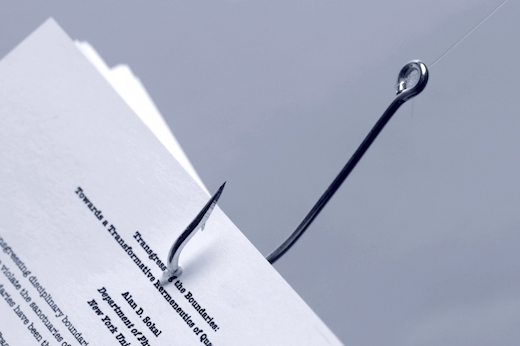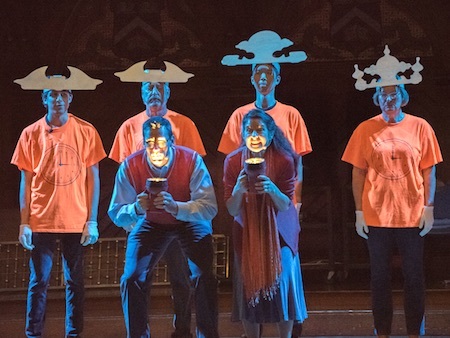Marc Abrahams's Blog, page 233
January 4, 2017
Woodpeckers don’t get headaches. They give them.
 “This Woodpecker Will Drill Into Your Skull And Eat Your Brains—If You’re a Baby Dove,” explains an article by Jason Bittel in Smithsonian magazine. It says:
“This Woodpecker Will Drill Into Your Skull And Eat Your Brains—If You’re a Baby Dove,” explains an article by Jason Bittel in Smithsonian magazine. It says:
In 2015, Harold Greeney [pictured here, horizontal] trained his camera on a mourning dove nest stitched into the crook of a cactus. As an ornithologist, Greeney studies the love lives of birds…
What happens next may upset you (and in fact, if you’re sensitive to bird-on-bird violence, you may want to stop reading here). Before the chicks even realize there’s an enemy at the gates, the woodpecker cocks its head back and starts to peck … their skulls. The Gila’s head moves like a pneumatic hammer, up and down, up and down, drilling into flesh and bone with the force of 1,000 G’s. Soon both chicks’ skulls have been opened up like coconuts. At this point, the woodpecker begins extracting brain and blood with its long, sticky tongue….
Greeney has a possible explanation as to what’s happening—but it probably won’t make you feel any better. When Gila woodpeckers get thirsty, he speculates, they crack open a couple of nestling heads like you or I might open a six-pack. “My guess is that these woodpeckers, like most birds in the Sonoran Desert, are fluid or water stressed,” he says. “This woodpecker appears to me to be clearly targeting the heads of the nestlings, and thus purposefully opening them to drink fluid—and this may be something that happens more often than is documented….
Here’s part of that video:
Other scientists have explored how woodpeckers can peck so stridently without (apparently, anyway) themselves getting headaches. The 2006 Ig Nobel Prize for biology was awarded to Ivan R. Schwab, of the University of California Davis, and the late Philip R.A. May of the University of California Los Angeles, for exploring and explaining why woodpeckers don’t get headaches. Their work is documented in these papers:
“Cure for a Headache,” Ivan R Schwab, British Journal of Ophthalmology, vol. 86, 2002, p. 843.
“Woodpeckers and Head Injury,” Philip R.A. May, Joaquin M. Fuster, Paul Newman and Ada Hirschman, The Lancet, vol. 307, no. 7957, February28, 1976, pp. 454-5.
“Woodpeckers and Head Injury,” Philip R.A. May, Joaquin M. Fuster, Paul Newman and Ada Hirschman, The Lancet, vol. 307, no. 7973, June 19,1976, pp. 1347-8.

Umbrella Progress on a Crowded Sidewalk (podcast #96)
What happens when lots of people with umbrellas walk in opposite directions on a crowded sidewalk? A research study explores that very question, and we explore that study, in this week’s Improbable Research podcast.
SUBSCRIBE on Play.it, iTunes, or Spotify to get a new episode every week, free.
This week, Marc Abrahams discusses a published lotsa-people-walking-with-umbrellas study. Melissa Franklin, a Harvard physics professor who designed parts of the Large Hadron Collider at CERN — lends her voice, and her scientific expertise, and her opinions —with dramatic readings from a research study you may have overlooked.
For more info about what we discuss this week, go explore:
“Impact of Holding Umbrella on Uni- and Bi-Directional Pedestrian Flow: Experiments and Modeling,” Ning Guo, Qing-Yi Hao, Rui Jiang, Mao-Bin Hu, and Bin Jia, arXiv 1606.03434, December 21, 2015.
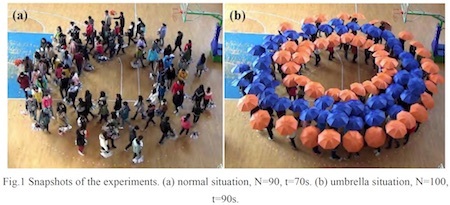
The mysterious John Schedler or the shadowy Bruce Petschek perhaps did the sound engineering this week.
The Improbable Research podcast is all about research that makes people LAUGH, then THINK — real research, about anything and everything, from everywhere —research that may be good or bad, important or trivial, valuable or worthless. CBS distributes it, on the CBS Play.it web site, and on iTunes and Spotify).
NEXT POST: xxxx

January 3, 2017
How to prepare a moth to drive a car
Step-by-step, practical instructions for how to prepare a moth to drive a tiny automobile. That’s what this video shows, and the accompanying paper describes:
It’s all published formally as: “Insect-controlled Robot: A Mobile Robot Platform to Evaluate the Odortracking Capability of an Insect,” Noriyasu Ando, Shuhei Emoto, and Ryohei Kanzaki, Journal of Visualized Experiments, no. 118, December 2016, e54802. The authors are at the University of Tokyo. They explain:
“we have developed an insect-controlled robot in which a male adult silkmoth (Bombyx mori) drives a robot car in response to odor stimuli; this can be regarded as a prototype of a future insect-mimetic robot. In the cockpit of the robot, a tethered silkmoth walked on an air-supported ball and an optical sensor measured the ball rotations. These rotations were translated into the movement of the two-wheeled robot. The advantage of this “hybrid” approach is that experimenters can manipulate any parameter of the robot, which enables the evaluation of the odor-tracking capability of insects and provides useful suggestions for robotic odor-tracking.”
BONUS: Michael Price wrote it up for Science magazine, with the headline “Watch this moth drive a scent-controlled car.”
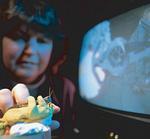 BONUS (somewhat related): The 2005 Ig Nobel Peace Prize was awarded to Claire Rind and Peter Simmons of Newcastle University, for electrically monitoring the activity of a brain cell in a locust while that locust was watching selected highlights from the movie “Star Wars.” (They describe that research, in the study “Orthopteran DCMD Neuron: A Reevaluation of Responses to Moving Objects. I. Selective Responses to Approaching Objects,” F.C. Rind and P.J. Simmons, Journal of Neurophysiology, vol. 68, no. 5, November 1992, pp. 1654-66.)
BONUS (somewhat related): The 2005 Ig Nobel Peace Prize was awarded to Claire Rind and Peter Simmons of Newcastle University, for electrically monitoring the activity of a brain cell in a locust while that locust was watching selected highlights from the movie “Star Wars.” (They describe that research, in the study “Orthopteran DCMD Neuron: A Reevaluation of Responses to Moving Objects. I. Selective Responses to Approaching Objects,” F.C. Rind and P.J. Simmons, Journal of Neurophysiology, vol. 68, no. 5, November 1992, pp. 1654-66.)

Haute-Cultural-Scientifical Direct-Brain-Stimulation of a Peak-Cultural (Proustian) Pastime
This newly published study may by the most impressive—in some senses—academic publication of our time:
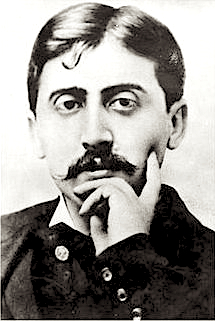 “The ‘Proust Phenomenon’: odor-evoked autobiographical memories triggered by direct amygdala stimulation in human,” Fabrice Bartolomei, Stanislas Lagarde, Samuel Médina Villalon, Aileen McGonigal, and Christian G. Benar, Cortex, epub December 18, 2016. The authors write:
“The ‘Proust Phenomenon’: odor-evoked autobiographical memories triggered by direct amygdala stimulation in human,” Fabrice Bartolomei, Stanislas Lagarde, Samuel Médina Villalon, Aileen McGonigal, and Christian G. Benar, Cortex, epub December 18, 2016. The authors write:
Vivid memories triggered by odors were particularly well described by the French writer Marcel Proust in his novel Swann’s Way (Du Côté de Chez Swann). The sensorial input provoked by the madeleine cake’s odor, flavor and texture immediately transported him into a vivid and rich past childhood episode. Proust constructed a detailed literary description of psychological characteristics of the reminiscence….
A main characteristic of the Proust phenomenon is its unpredictability, rendering it particularly difficult to reproduce in an experimental setting. The present case is the first to analyze the induction of Proust phenomenon by focal electrical stimulation of the amygdala.
If you find yourself impressed by this study, perhaps you have learned something about yourself.
(Thanks to Neil Martin for bringing this to our attention.)
BONUS: Someone named Simon explains to you the cultural significance of madeleines.
BONUS: In this video, someone named Sonia instructs you on how to make a madeleine:

January 2, 2017
A look back at the Ig Nobel Prize-spurring Sokal hoax
The 1996 Ig Nobel Prize for literature was awarded to the editors of the journal Social Text, for eagerly publishing research that they could not understand, that the author said was meaningless, and which claimed that reality does not exist. The “research” paper was “Transgressing the Boundaries: Toward a Transformative Hermeneutics of Quantum Gravity,” written by Alan Sokal, published in Social Text in Spring/Summer 1996, pp. 217-252. Ig Nobel Prizes, of course, are for achievements that make people laugh, then think.
The publication of that intentionally nonsensical paper — and the fervent defense, by the editors who published it, of the paper’s nonexistent meaning — became known as “The Sokal Hoax”. Now, in January 2017, Jennifer Ruark in the Chronicle of Higher Education takes a look back at what happened, and what the some of key people have to say about it now:
“… Sokal revealed that he didn’t believe a word of what he’d written. It was all a big joke, but one motivated by a serious intention: to expose the sloppiness, absurd relativism, and intellectual arrogance of ‘certain precincts of the academic humanities.’ …”

Music discriminations by carp (Cyprinus carpio)
“Prior to this series of experiments, the prevailing opinion appeared to be skepticism as to whether koi could discriminate one piece of music from another under any circumstances. Now it appears that these animals can discriminate polyphonic music, discriminate melodic patterns, and even classify music by artistic genre.”
Koi (Cyprinus carpio), which are members of the carp family and close relatives of the goldfish, are not known to communicate using sound – but maybe they can discriminate different types of (human) music? To find out Professor Ava Chase of the Fish Laboratory at the Rowland Institute for Science, Cambridge, Massachusetts, US, set up a suite of experiments. The one pictured below shows ‘Beauty’* and ‘Oro’ the koi listening to a MIDI-based rendition of Paganini’s 24th Caprice for solo violin, (perhaps best known from Rachmaninoff ’s ‘Rhapsody on a Theme by Paganini’.)
“The data show that without timbre cues, Oro clearly discriminated between the two melodies [in each stimulus condition (i.e., second-generation S- , first-note-removed, and both-ends-clipped), 5 final sessions, t(4) > 10, p < .001].”
*Note: Unfortunately, “Beauty’s performance inexplicably deteriorated to the point where he had to be dropped as a subject.” – that’s to say he no longer took part.
Two videos of the experiment (with the theme played both forwards and backwards) are available here in [.mpg] format (note: music starts at around 15 seconds in)
REFERENCE: Animal Learning & Behavior, 2001, 29 (4), 336-353 ‘Music discriminations by carp (Cyprinus carpio)’
ALSO SEE: ‘Goldfish no golder when fed tomatoes’
BONUS: ‘How to invest and make money from Koi carp’ (from www.thisismoney.co.uk)

January 1, 2017
Dott on Wacke
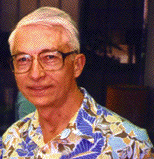 Here Dott opines on wacke, and on graywack. And that’s not all:
Here Dott opines on wacke, and on graywack. And that’s not all:
“Wacke, graywacke and matrix; what approach to immature sandstone classification?” Robert H. Dott [pictured here], Journal of Sedimentary Research 34, no. 3 (1964): 625-632.
“It is suggested that sedimentary rock classification systems have become confused because factors of genesis related to tectonics, provenance, depositional process and environment have been included in them. Classification based on description alone is desirable. It is recommended that the term graywacke reflect texture and maturity rather than specific mineral composition. The term arkose is viewed as nearly useless.”
BONUS: Alden gets on About on grwywacke and wacke

December 30, 2016
Tonight’s leap second — and the opera about the leap second
The leap second that will make this year, 2016, longer than most people will expect — was the subject of an opera that premiered three months ago, as part of the 26th First Annual Ig Nobel Prize ceremony, at Harvard University.
The mini-opera is called “The Last Second“. It’s about a plot to secretly add an extra leap second to the world’s clocks, and secretly reap the financial benefits.
Here’s video of the performance — all three acts, each preceded by a scene-setting micro-lecture:
micro-lecture 1 (“What’s a leap second, and why do we create them?”)
ACT 1
micro lecture 2 (“How scientists decide when to create a leap second, and how we do it?”)
ACT 2
micro-lecture 3 (“The kinds of financial mischief that could be done during an unannounced extra leap second.”)
ACT 3 — the Thrilling Conclusion!
We were delighted at the timing of all this. We had already written the opera, and had begun preparing to perform it, BEFORE the scientists who control the world clocks decided to add a leap second to 2016. We invited one of those very scientists to come be part of the show. You can see him delivering the micro lecture that introduced Act 2.
Here are some details about the mini-opera, the performers, and the performance:
You can download and read the libretto. It’s part of the printed program that was handed out to each of the 1100 audience members at Sanders Theatre. Parts of the opera were later broadcast on public radio’s “Science Friday” program.
Music by Domenico Gaetano Maria Donizetti, Charles-Camille Saint-Saëns, Modest Petrovich Mussorgsky, and Frédéric François Chopin, story and words by Marc Abrahams
Directed by Maria Ferrante and Robin Abrahams
Starring Maria Ferrante and Scott Taylor
Featuring The Clock Chorus (Ellen Friend, Abby Schiff, Jean Cummings, Sue Wellington, Daniel Rosenberg, Kevin McCaughey, Michael Skuhersky, Ted Sharpe (chorus wrangler), John Jarcho, Fred Tsai, Erika Hutchinson, Jan Hadland, Kettly Benoit). The chorus ranks was swelled, in the opera’s final act, by the Nobel laureates
Backed by the Concentrated Forces of Nature, a distilled orchestra composed entirely of Harvard Medical School researchers Patrick Yacono and Thomas Michel
(Prior to Act 1) Special Time Micro-Lecture by Jenny Hoffman (Harvard physics professor)
(Prior to Act 2) Special Time Micro-Lecture by John Lowe (NIST time scientist)
(Prior to Act 3) Special Time Micro-Lecture by Eric Maskin (Nobel laureate in economics)

December 29, 2016
A newly described illusion – the Pot/Lid Illusion
“The pot is on the stove. The lids are in the drawer. You open the drawer, seeing disordered lids of different sizes, many set nearly vertical to help with drying. You take the one that looks correct: too big! You try again with one that looks one size too small, and— surprise! —it matches the pot exactly.”
If that’s ever happened to you, you may have been experiencing an illusion which has recently been formally described and named – the Pot/Lid Illusion. Professor Stefano Mastandrea University of Roma Tre, Italy, and professor John M. Kennedy University of Toronto, Canada provide a description in their new contribution to the journal i-Perception, September-October 2016, 1–4, entitled : Pot/Lid Illusion.

December 28, 2016
Hank Rawlins joins the Luxuriant Facial Hair Club for Scientists (LFHCfS)
Hank Rawlins has joined the Luxuriant Facial Hair Club for Scientists (LFHCfS), a sibling club of the Luxuriant Flowing Hair Club for Scientists (LFHCfS). He says:
I am a metallurgical engineer and Technical Director of my own company. Most of my research is for the upstream oil and gas industry. My original goal was to grow a flowing mane, but after a sordid incident at a Billy Squier concert in the mullet stage I cropped my locks. The switch to hirsute chin started with no shave November which kept going year round. On a recent trip to Dubai random people asked to take photos of my beard. It seems that only muftis and ISIS fighters grow decent beards and I didn’t appear to fit either category.
Hank Rawlins, Ph.D, P.E., LFHCfS
Technical Director
eProcess Technologies
Butte, Montana, USA


Marc Abrahams's Blog
- Marc Abrahams's profile
- 14 followers


